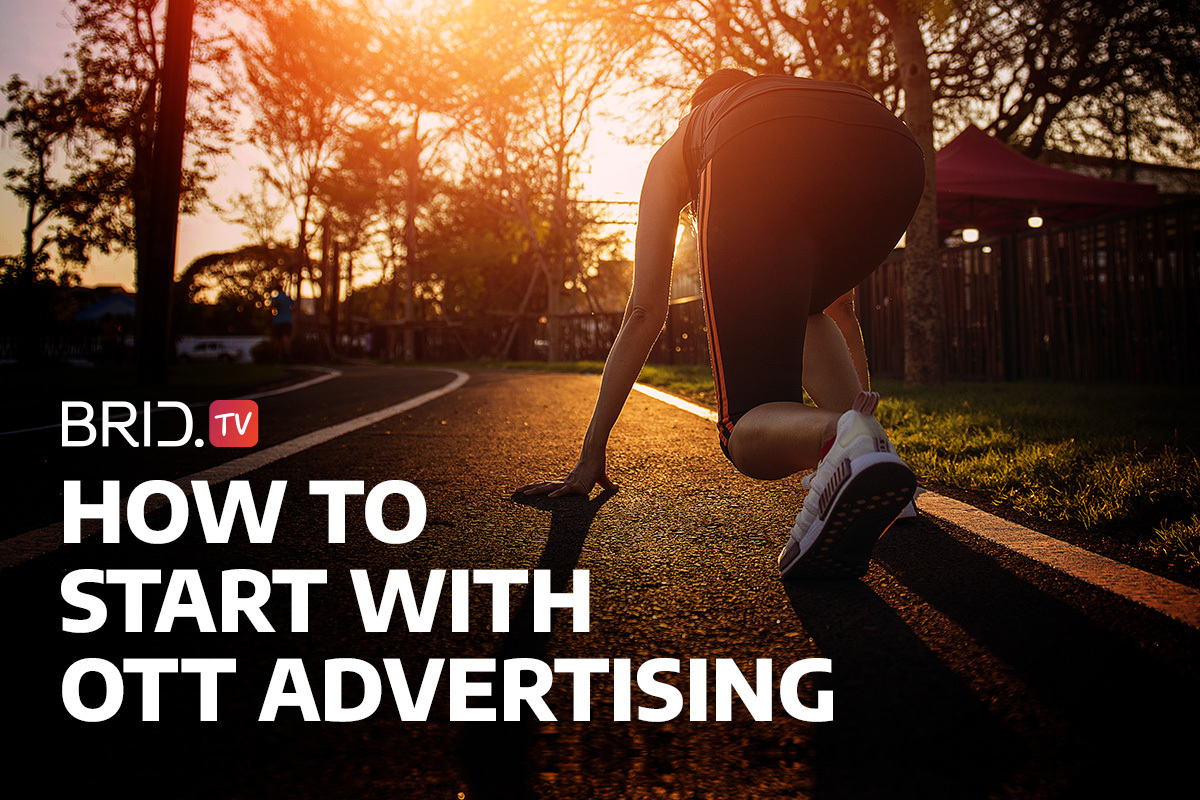OTT streaming dethroned cable TV operators in the battle for consumer attention for the first time recently. Many believe this event foreshadows the slow but inevitable death of cable TV. This change will prove troublesome for many brands, as they will lose a significant amount of advertising space. That is why more and more of them will be moving to the OTT advertising market.
This trend will prove particularly beneficial for publishers who are quick enough to adapt to changing consumer trends. Expanding into the OTT space has never been easier, so there’s no room for excuses anymore. Nowadays, publishers can easily build an OTT app and launch it within days. And if you’re using video ads to monetize your website, this is the logical next move in expanding your business.
OK, but why should you invest in OTT advertising in the first place? And how do you even start when your app goes live? These are just some of the things we’ll cover in this detailed guide. But first, let’s start with the basics…
- What Is OTT Advertising
- How OTT Advertising Works
- The OTT Advertising Ecosystem Explained
- Why Invest in OTT Advertising as a Publisher?
- Benefits of OTT Advertising
- Challenges of OTT Advertising
- How to Buy OTT Ads
- How to Pick an OTT Advertising Platform for Your Streaming Service
- Start With OTT Advertising With Brid.TV
- FAQ
What Is OTT Advertising
OTT (over-the-top) advertising is personalized ad delivery over the internet directly to viewers’ streaming video services or devices. There are many types of OTT devices users can stream from. Here are just some of the most common ones:
- Smart TVs / Connected TVs (via in-TV applications like HBO Go or Netflix)
- Gaming Consoles (e.g., PS5, Xbox Series X)
- Streaming Boxes (e.g., Apple TV, Android TV, Amazon Fire TV)
- HDMI Sticks (e.g., Amazon Fire TV Stick, Roku, Chromecast)
- DVR Set-Top Boxes
This advertising method allows publishers to overcome various problems of traditional advertising, like pre-determined broadcasting schedules, lack of targeting and performance tracking, and much more.
How OTT Advertising Works
OTT advertising handles video ad serving similarly to how it’s done on the web, but with more limitations. For instance, the OTT space doesn’t support VPAID ad tags, unlike the web and mobile.
The entire process consists of two vital parts:
- Ad Delivery
- Ad Insertion
Let’s look at each of them in more detail.
How Are OTT Ads Delivered?
Regarding OTT ad delivery, we must consider how the OTT device and the streaming platform communicate. This communication is established via VAST ad tags, which are mediators in the four-step ad delivery process:
- Audience Creation — An OTT platform creates an audience based on its subscription data. This data may include rich first-party and third-party information like users’ favorite shows or categories to allow for better targeting.
- Campaign Pushing — After that, the platform will match and distribute your ads to the appropriate audience.
- Ad Displaying — The OTT platform and the ad server will communicate with these ad tags to know which ad to display.
- Reporting — The final step includes the OTT platform sending all relevant ad campaign data back to the advertiser. This data often consists of information like impressions, ad completion rates, and other first- and third-party data.
How Are OTT Ads Inserted?
The second crucial process of OTT advertising is how ads are inserted into the content. There are two primary ad insertion methods with the currently available technology:
Client-Side Ad Insertion (CSAI)
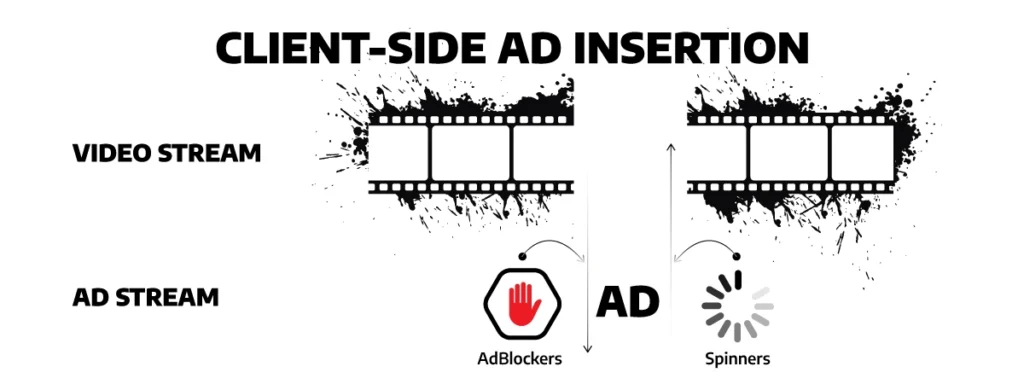
The client-side ad insertion (CSAI) method is an old-fashioned ad insertion technique where the ad loading process occurs within the OTT box itself before getting delivered to the viewer. This method is relatively ineffective because it is susceptible to ad blockers. Since ads come from outside the content delivery stream, ad blockers can detect and prevent them from playing.
Server-Side Ad Insertion (SSAI) or Ad Stitching

The server-side ad insertion (SSAI) method integrates ads into the content stream. That ‘camouflages’ the ads from ad blockers, making this serving method much more reliable for advertisers.
SSAI works so that the ad and the content travel toward the end device as parts of a single frame-by-frame stream. Since the current ad-blocking technology does not differentiate ads from content streams, it’s rendered ineffective. That is why this method is also known as ad stitching. Oh, and let’s not forget that this ad insertion method also works on live broadcasts.
It should be evident by now that SSAI is a superior method to CSAI in many ways. Here’s a quick list of the most notable benefits SSAI has over CSAI:
- Excellent Solution to Ad Blocking
- Eliminates Latency and Buffering Issues
- Offers Better User Experience
- Easier Development and Implementation
- Better Consistency, Reliability, and Engagement
With all of the above in mind, if you wish to get the best ROI from your OTT advertising campaigns, it’s best to look for a platform that uses SSAI for ad insertion.
The OTT Advertising Ecosystem Explained
Knowing how OTT ads are delivered and inserted is just the basics. The next step is learning the ropes of the OTT advertising ecosystem and how you (the publishers) fit in. Here’s a quick infographic showing all the parties present within the system and how they’re connected:
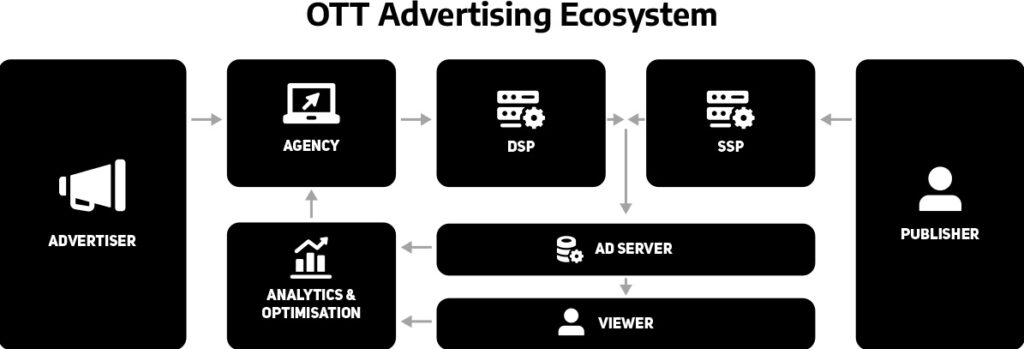
As you can see, the publisher is just one of the many cogs in the OTT advertising machine. Here’s a quick overview of each of these parties’ roles:
- Advertiser — The advertiser is a brand or company looking to get its brand in front of OTT audiences through advertising.
- Agency — Agency is often an intermediary party that handles video ad creation, ad placements, and campaign optimization for the advertiser.
- Demand-Side Platform (DSP) — A DSP is a platform that enables advertisers (or their partner agencies) to buy ad inventory at scale, usually with the help of automation.
- Publisher — Publishers are content providers looking for ad demand to monetize their on-demand platforms and streaming services.
- Supply-Side Platform (SSP) — An SSP is a platform that enables publishers to sell ad inventory on their websites, mobile apps, and OTT platforms automatically.
- Ad Server — An ad server is a technology that publishers, advertisers, and video ad networks use to serve ads across various OTT channels.
- Analytics & Optimization — This part of the OTT advertising ecosystem comprises various tools that collect and analyze viewership data. Publishers and advertisers can then use this data to evaluate the performance of their ad campaigns.
All of the parties in the OTT advertising ecosystem are co-dependent. Publishers wouldn’t be able to earn revenue without advertisers, and DSPs and SSPs would go out of business if it weren’t for the previous two. This co-dependence guarantees the market’s stability and is one of the main reasons publishers should explore ad-based OTT monetization in favor of other monetization models.
Why Invest in OTT Advertising as a Publisher?
If you’re still unsure about investing in OTT advertising, here are a few data-driven reasons in favor of that:
- OTT Viewership Is Growing — While cord-cutting is becoming more prevalent, OTT is growing in popularity. That is particularly true with younger audiences, as 61% of U.S. consumers between 18 and 29 regularly watch TV through streaming services. This trend will keep growing the more the traditional TV industry gets put on the back burner.
- New OTT Services Are Appearing Rapidly — As of 2020, there are more than 300 OTT providers in the U.S. alone, and everybody’s trying to compete for a piece of this lucrative market. That should be a good indicator of the OTT industry’s potential for growth.
- OTT Ad Investments Are on the Rise — With the rapid growth of the OTT market, more brands are investing in OTT advertising by the day. Experts predict that OTT ad revenue will reach $119 billion by 2023.
- Ad Fraud Is Scarce in OTT Advertising — OTT platforms operate in a closed environment, meaning that the odds of falling victim to ad fraud are much lower than in online video advertising.
- OTT Is the Only Viable Alternative to Traditional TV Commercials — According to a survey by Pew Research Center, merely 31% of Americans of ages 18–29 watch TV, while more than 61% find entertainment through OTT. This fact makes the OTT advertising market incredibly appealing to advertisers looking to reach this user demographic.
As you can see, the OTT market’s massive potential is only going to keep growing. That is why getting a foothold in the market early on can prove imperative to your success. Doing so will give you the upper hand over competitors who might have not yet realized the benefits of OTT advertising.
· Premium Google ADX Demand
· Omnichannel Monetization
· Rich Selection of Video Ad Formats
· Real-Time Performance Tracking
· Automated Reporting
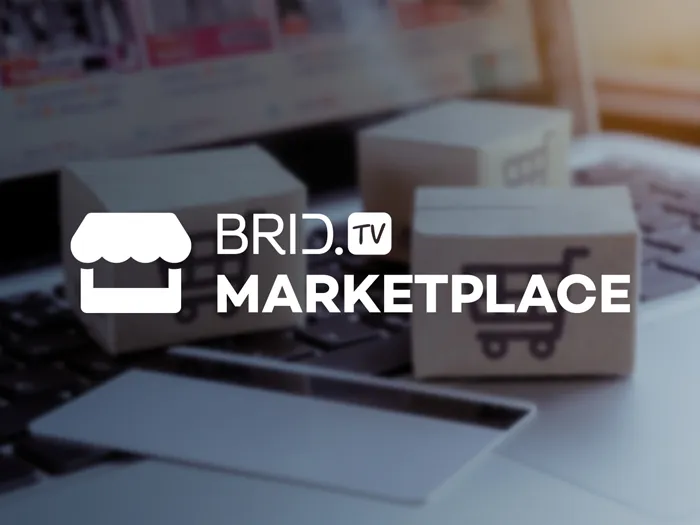
Benefits of OTT Advertising
There are many reasons publishers should consider OTT advertising as their go-to monetization model for their platform or app. Here are a few of the most notable ones:
OTT Opens Up the Door to Broader Audiences
Consumer trends are rapidly changing, and publishers must adapt. More and more users consume content over their mobile phones and OTT devices. Besides getting your content to where your viewers are, expanding into the OTT market lets you reach millions of new people who might have never engaged with your brand.
When you combine the increased reach and consumer satisfaction of going over the top, OTT advertising can quickly turn a significant profit.
Ad Supported Streaming is on the Rise
Recently, Netflix began exploring introducing a new, ad-supported subscription plan to their OTT offering. At the same time, Warner Brothers have been talking about launching their own free ad-supported TV service.
These changes speak volumes about the state of the OTT industry currently. SVOD is losing its appeal to consumers, and more and more of them are looking for more affordable alternatives. That is where ad-supported streaming comes in.
And with the rise in demand for such services, the market’s profitability will follow suit.
OTT Advertising Doesn’t Rely on Third-Party Cookies
The upcoming death of the third-party cookie has the entire digital advertising industry riled up for a good reason. This change means advertisers will lose the ability to target consumers based on their browsing histories and behavior.
However, the OTT advertising realm is different — it doesn’t rely on third-party cookies to serve ads, so publishers and advertisers who choose to invest in it won’t lose anything. Audience targeting on OTT is handled by various analytics and audience collection tools that operate independently of any cookies.
OTT Video Ads Have Higher Completion Rates
Unlike other forms of digital video advertising, users cannot skip OTT ads. Because of that, OTT ads have significantly higher completion rates than ads on the web. And since this metric is directly tied to publisher revenue, OTT ads have higher earning potential than standard video ads.
Challenges of OTT Advertising
Despite its many benefits, OTT advertising also has a few downsides. Looking at both sides of the coin is crucial when deciding whether to invest in a whole new market. So let’s look at the potential challenges you might face if you opt to give OTT advertising a shot:
- No Support for Third-Party Ad Serving and Measurement — Because the OTT market is still young, there is still no adequate third-party support for advertisers. However, that is likely to change in the future.
- There Are No Industry-Wide Standards and Guidelines — Since advertisers and publishers are new to this rapidly growing market, there are still no set-in-stone industry standards and guidelines. That makes the market quite unpredictable, which might be a deal-breaker for some.
- Lack of Some of the Functionalities Web Browers Have — This point primarily relates to OTT platforms’ limitations with particular types of digital video ads. Aside from lacking the ability to collect data from cookies and having potential targeting issues, OTT platforms limit the functionalities of VPAID ad tags. VPAID ads offer various advertising opportunities with their interactive and media-rich ads, which OTT services currently don’t support.
All of the above issues are present mostly because the OTT advertising market is still young. But with all these new faces like Netflix and Warner Brothers deciding to explore it, dozens of other publishers and advertisers will follow suit. And as the market grows, so will the technology and solutions for the above problems.
How to Buy OTT Ads
If we managed to convince you to try AVOD or another ad-supported OTT model, the last thing you’ll need to know is how to sell ad space. There are two widespread ways of doing that:
- Guaranteed Insertion Order — This method entails making a direct deal between an advertiser and a publisher by sharing the complete details of the ad placement. These deals usually mean advertisers purchase ad inventory for a fixed number of impressions and a preset price. The most significant downside of this method is that both parties have to do it manually, which can be time-consuming.
- Data-Driven Programmatic Buying — This method is the better choice for both advertisers and publishers since it is based on a real-time bidding system. That means that publishers will put their available ad inventory on an auction, and the advertisers then bid for it, and the highest bidder wins. The most notable advantage of programmatic video advertising is that it is fully automated. Even though advertisers have no guaranteed impression frequency, it pays off in the long run due to lower time investment.
So how do you choose between these two routes?
The former offers higher CPMs, meaning you’ll earn more revenue for each ad you play. However, this method requires you to invest much more time and resources to get it rolling.
On the other hand, the programmatic route allows you to achieve higher fill rates and automate the majority of the process, but at lower CPMs.
Ideally, you’ll want to aim for a mix of the two. You should hire a dedicated sales team to handle direct buying deals and a programmatic supply chain to fill in any leftover inventory.
But if you’re just starting, we advise you to go the programmatic route and complement it with direct selling later down the line.
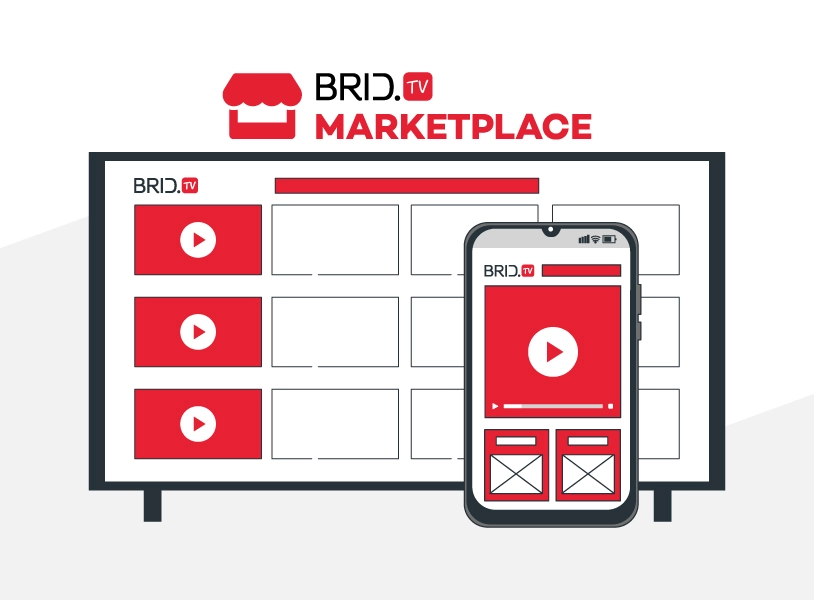
How to Pick an OTT Advertising Platform for Your Streaming Service
If you go the programmatic route, you will need to find ad demand. And the easiest way to do that is with an OTT advertising platform.
OTT advertising platforms are software that allows OTT publishers to sell their inventory programmatically. These platforms also include features like in-depth analytics, advanced targeting options, and content security features.
OTT advertising platforms are mediators between publishers and advertisers (similar to DSPs and SSPs), and their goal is to streamline the advertising process for both. Here are a few examples of OTT advertising platforms:
- Google ADX
- Brid.TV Marketplace
- SpotX
- OpenX
- SpringServe
- And more…
These platforms come with different features, conditions, and rates, so choosing the right one will be imperative. If you need help picking one for your ad-supported OTT service, check out our list of the best OTT advertising platforms for a comprehensive look at some of the best choices on the market.
Start With OTT Advertising With Brid.TV
If you’re looking for access to programmatic ad demand for your ad-supported OTT business, Brid.TV can help you. Brid.TV’s Marketplace allows publishers to access premium Google ADX demand and start monetizing across OTT and CTV channels immediately. Publishers who sign up for the Brid.TV place will also get access to detailed ad analytics, a dedicated account manager to help them optimize their campaigns, and various other features.
And if you’re just starting in the OTT world and need a way to deliver content across various OTT devices, Brid.TV can help you there too. Our online video platform and HTML5 player have extensive Android, iOS, and tvOS SDKs. Publishers can use these to integrate our platform and player with their OTT streaming services seamlessly. They can also use one of our white-label apps to launch a branded OTT app across Android, Android TV, iOS, Apple TV, or Samsung and LG Smart TV devices.
Get in touch, and let us help you take the OTT advertising world by storm.

FAQ
1. What does OTT advertising mean?
OTT (over-the-top) advertising entails delivering ads across the internet directly to viewers’ streaming video services or devices. OTT advertising allows advertisers to reach broader audiences at scale and is more accessible than traditional TV commercials.
2. How much do OTT ads cost?
The cost of OTT advertising varies drastically from platform to platform. However, OTT ads typically have between $25 and $40 CPM.
3. How to buy OTT ads?
The two most common ways of buying OTT ads are directly and programmatically. The former is done via direct deals with advertisers, while the latter is done through an OTT advertising platform.
4. What are the best OTT advertising platforms?
Google ADX is one of the best OTT advertising platforms. Other notable platforms worth considering are Brid.TV Marketplace, OpenX, SpringServe, and SpotX.
